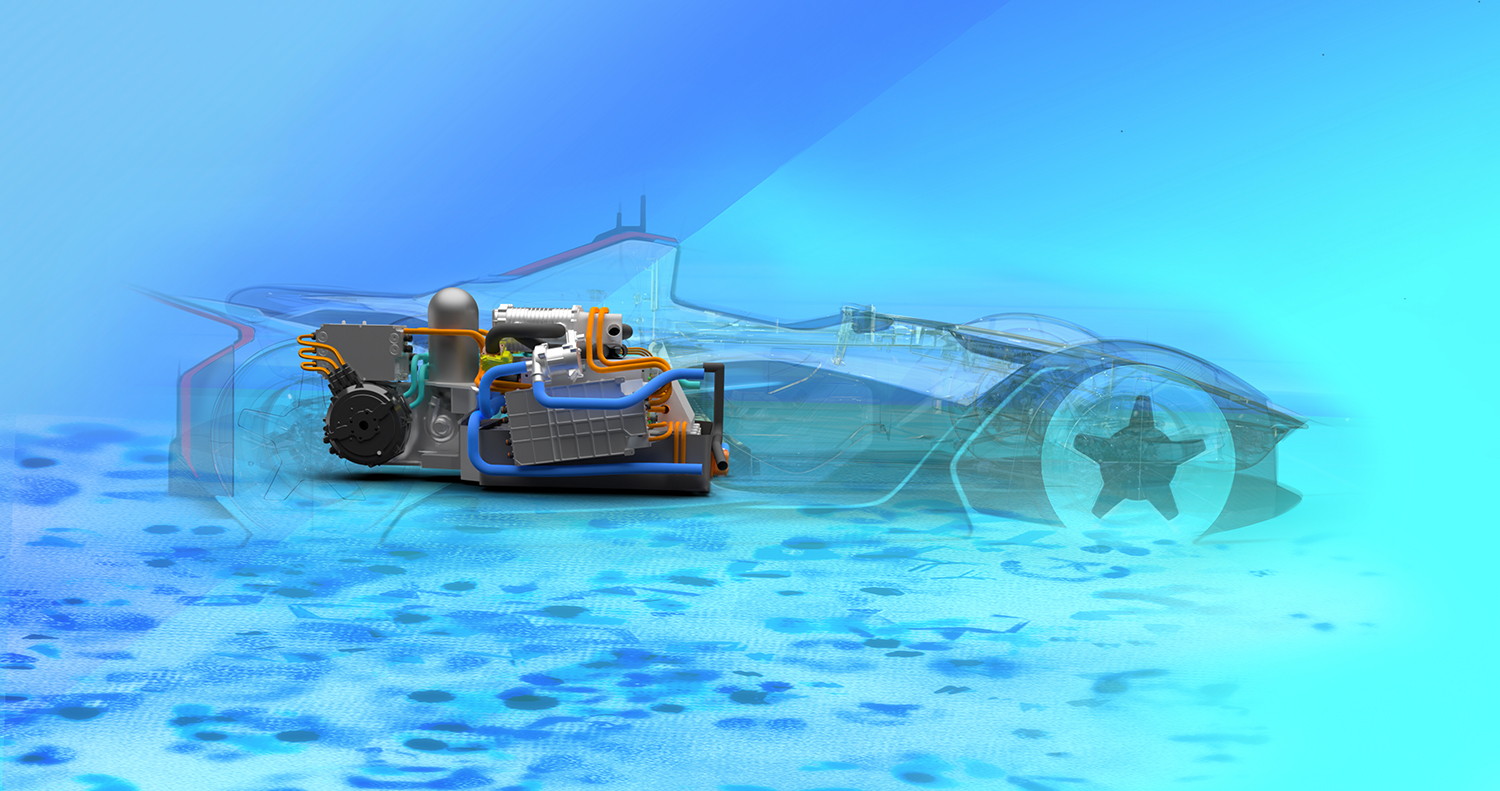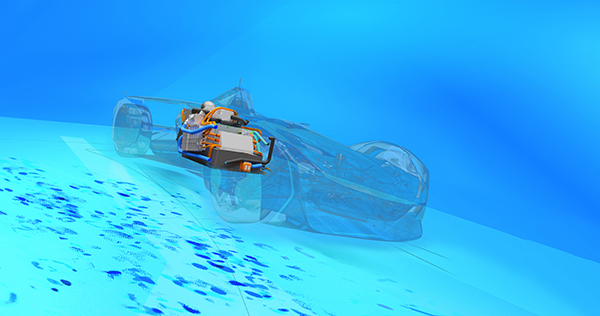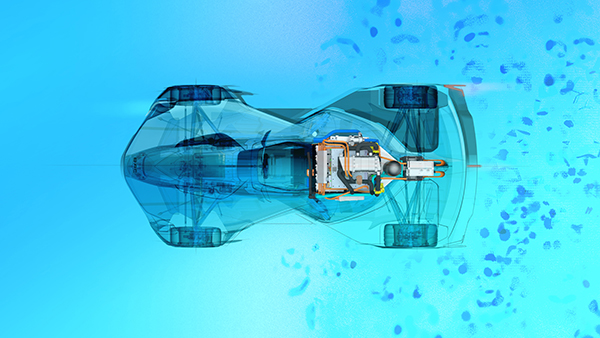
BAC designed its Mono racecar using a mix of Autodesk software. The project was the focus of a talk at the Autodesk Accelerate Conference. Image courtesy of Autodesk / BAC.
Autodesk Accelerate: Lessons on Transformation from the Big Easy
Autodesk customers discuss competitive advantages and challenges of digital transformation
Latest News
May 27, 2022
In mid-May in New Orleans, Louisiana, as temperature sored past 90°F, a select group of Autodesk executives and customers kicked off the two-day Autodesk Accelerate Conference inside the Sheraton Hotel on Canal Street, about 15 minutes' walk from the historic French Quarter. Outside, tourists sauntered along Bourbon Street, frequently dashing into the air-conditioned gelato shops and antique stores to escape The Big Easy's midday heat. At the conference, attendees wove in and out of the breakout sessions and networking lunches, swapping stories of survival and resilience. Some said the key to weather the turbulent manufacturing climate—brought on by, among others, warfare and diseases— is digital transformation.
Survival Strategy for the Stormy Years
Stephan Hooper, Vice President & General Manager of Design & Manufacturing Cloud Solutions at Autodesk, summed up the uneasy times in his keynote. “There are lots of uncertainties about the macro-economic conditions. The supply chains are fragile. We'll encounter skill shortages, the likes of which we have never ever seen before. The only certainty is, the costs of goods will continue to increase. You cannot control the market conditions; you can only control the cost within your organization's operations,” he observed.
Bleak as it seems, the troubled times offer new adventures, in Hooper's view. “In a stable market, you don't get a lot of opportunities to disrupt the competition. The nice thing about an unstable market is, it does present you with the opportunity to do that,” he said.
The recommended combo (or gumbo, to borrow a local culinary term) is digital processes, mixed with flexible supply chains. To him, connected digital pipelines and cloud infrastructure are part of the flexibility. The setup allows “a change made anywhere to be reflected everywhere.”
And software-controlled products and connected factories point the way to manufacturing's future, with more ways to offer maintenance and services on products already delivered. This vision is one of the reasons the company recently acquired the Prodsmart, which offers software solutions to reveal product insights.
Srinath Jonnalagadda, Autodesk VP of Industry Strategy for Design and Manufacturing, wrote in his company blog, “A critical piece of [the digital factory] puzzle is bringing digitization and connectivity to the shop floor, with data at the center. This will help manufacturers to transform their factories and set up a truly collaborative end-to-end, design-to-make workflow.”
At the same time, the company also purchased the IP assets of CIMCO, which develops Industry 4.0 software for machine communication. “They’ve developed technology that automates the process of defining machine strategies and provides a browser-based experience. This allows machinists to better connect to the rest of the product development lifecycle,” explained Jonnalagadda.
A Tailored Racecar
In-between sessions, some attendees wandered into the display hall to get a closer look at the BAC (Briggs Automotive Company) Mono, a bespoke luxury racecar. Delivering a talk on the development of Mono, BAC's founding director Neill Briggs, described the car as “Savile Row meets automotive.”
The company's design workflow involved Autodesk Alias, SketchBook, and VRED software, running on HP Z workstations. The use of generative design tools and carbon graphene frames resulted in a significantly lighter vehicle. “A panel set that weighed 41kg before the use of graphene went on to measure just 32kg—a massive 9kg / 22% weight saving,” BAC writes.
Now, setting its sight on zero emission, BAC engineers are exploring the use of synthetic fuels in partnership with the UK-based Veritech, a UK-based clean tech developer focusing on the automotive sector. BAC also uses HP Reverb VR headsets for collaborative design review and analysis.
“There is scope for further weight reduction via the adoption of a carbon case for the fuel cell which would save an estimated 15-20kg, and Viritech is also developing a new battery module that would save a further 30kg. This would bring the total vehicle weight to within 100kg of the current Mono-R,” write BAC in its announcement of the partnership with Veritech.


Diving into Digital Transformation
In a panel discussion titled “Finding the Future,” analysts Chad Jackson, Lifecycle Insights; Monica Schnitger, Schnitger Corporation; Stan Przybylinski, CIMdata; Michelle Boucher, Tech-clarity; and Allan Behrens, Taxal Ltd. took a closer look at the technical and cultural roadblocks to digital transformation.
The term is at risk of becoming a meaningless buzzword, some cautioned. Przybylinski jested, “Who was involved in the business process reengineering projects from the past? Well, they're now coming back, with a new flavor.”
Boucher said, “There's still a lot of ambiguities about what [digital transformation] means. It doesn't mean just digitizing your data. It means applying digital methods and technologies to your processes so you can automate them, and maintain a digital thread.”
Behrens said, “To me, it's about using computers for what they're good at. They're very good at processing, analyzing, and providing insights. It's also about reevaluating your business processes and transforming your company to make better use of the digital data.”
“It's important that people understand why they are doing it, why their jobs are changing,” said Schnitger. Digital transformation could make some veterans feel out of place or devalued. “You don't want them to feel discouraged; their knowledge is still valuable,” she added.
About 10 mins' walk from the site of the conference, The Cabildo, a Louisiana State Museum, houses a permanent exhibit titled “Living with Hurricanes: Katrina and Beyond.” The hand-written notes from the survivors, the uniforms of the first-responders, and the salvaged fragments of ravaged building serve as a painful reminder of an unwelcomed transformation. At the same time, they're also a testament to the spirit of collaboration and ingenuity that helped a community overcome their traumatic past.
BAC’s light-weighted car Mono on display at Autodesk Accelerate conf. Car wheels designed in generative design, made in aluminum forged billet. pic.twitter.com/nmL3bwq76j
— Digital Engineering 247 (@DEeditor) May 17, 2022
Subscribe to our FREE magazine, FREE email newsletters or both!
Latest News
About the Author
Kenneth Wong is Digital Engineering’s resident blogger and senior editor. Email him at kennethwong@digitaleng.news or share your thoughts on this article at digitaleng.news/facebook.
Follow DE




